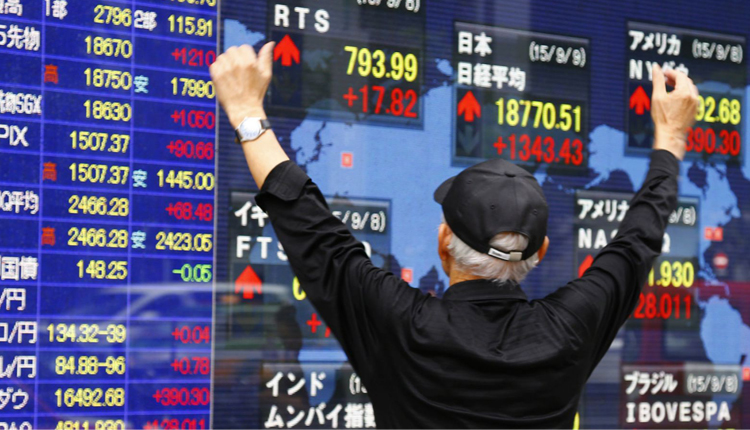Asian markets were higher on Wednesday following an earlier slump this week as trade tensions between the U.S. and China escalated.
Mainland Chinese shares advanced on the day, with the Shanghai composite adding 1.91% to 2,938.68 and the Shenzhen component rising 1.45% to 9,169.15. The Shenzhen composite also gained 2.325% to 1,577.92.
In Hong Kong, the Hang Seng index added 0.73%.
Japan’s Nikkei 225 rose 0.58% to close at 21,188.56, while the Topix index added 0.60% to finish its trading day at 1,544.15.
Japanese automaker Nissan Motor saw its shares plummet 6.47% after the company posted 2018 fiscal earnings that were their lowest level in 11 years.
In South Korea, the Kospi rose 0.53% to close at 2,092.78 as shares of LG Chem jumped 2.71%. Over in Australia, the ASX 200 gained 0.71% to finish its trading day at Down Under at 6,284.20.
Meanwhile, growth in China’s industrial output for April came in below forecasts, according to Reuters. The industrial production increased 5.4% year-on-year, compared to expectations of a 6.5% year-on-year increase by analysts in a Reuters poll. The country’s retail sales growth for April also came in at its slowest pace since May 2003.
“The April number that came out this morning for China, industrial output and the retail sales are very … depressing and disappointing and it’s coming, of course, at a bad time where the trade tensions have escalated,” Heng Koon How, head of markets strategy at Singapore’s UOB, told CNBC’s “Street Signs” on Wednesday.
Also on Wednesday, the People’s Bank of China set its official yuan midpoint at 6.8649 against the greenback — its weakest in more than four months, according to Reuters. The recent flare-up in trade tensions has renewed global market concerns over how much China will allow the yuan to weaken to offset heavier pressure on its exporters.
Heng said it was “a bit difficult” to see the yuan testing the 7 level against the dollar in the near term.
“From a messaging point of view, if China were to let … the (yuan) fall past 7, it’s just going to trigger a bit more … angry responses from Mr. Trump,” he said. “That’s just not going to help … the ongoing difficult talks.”
The onshore Chinese yuan last traded at 6.8651 against the greenback, while its offshore counterpart was at 6.8994 per dollar.
US-China trade
In overnight markets stateside, stocks saw a bounce as they recovered partially from Monday’s sharp losses, with the Dow Jones Industrial Average seeing its best day since April 12.
Those moves came after China announced on Monday its plans to raise tariffs on $60 billion worth of U.S. imports, starting on June 1. Beijing’s move came after Washington last week increased tariffs from 10% to 25% on a bulk of Chinese imports.
Those moves came after China announced on Monday its plans to raise tariffs on $60 billion worth of U.S. imports, starting on June 1. Beijing’s move came after Washington last week increased tariffs from 10% to 25% on a bulk of Chinese imports.
“We argued over the course of the last few weeks that … one of the things that concerned us about this recent escalation was that it felt to us as if both (Donald) Trump and Xi Jinping were perhaps, overconfident about their positions, ” Eric Robertson, head of global macro strategy and foreign exchange research at Standard Chartered Bank, told CNBC’s “Squawk Box” on Wednesday.
“I think both of them may have overestimated how much resilience their economic sentiment and market sentiment might have had … if they decided to take a hard line,” Robertson said. “That’s what I find troubling at the moment.”
The U.S. dollar index, which tracks the greenback against a basket of its peers, was at 97.560 after rising from levels below 97.4 yesterday.
The Japanese yen traded at 109.63 against the dollar after weakening from levels below 109.5 in the previous session, while the Australian dollar changed hands at $0.6924 after touching an earlier high of $0.6947.
Oil prices fell in the afternoon of Asian trading hours, with the international benchmark Brent crude futures contract declining 0.27% to $71.05 per barrel and U.S. crude futures slipping 0.76% to $61.31 per barrel.
Source: CNBC



